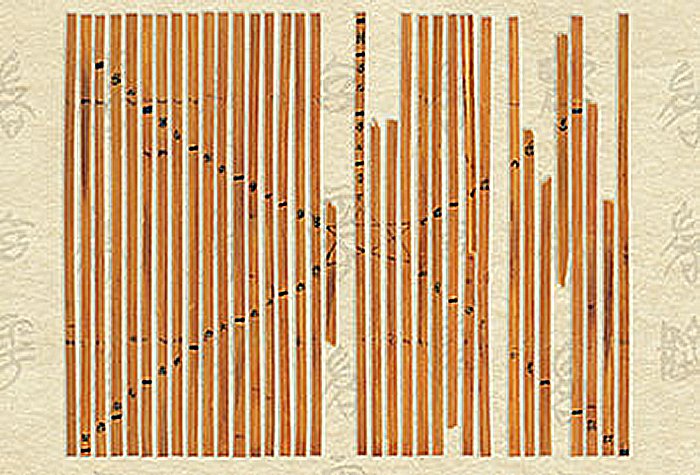Conny Waters – AncientPages.com – Researchers of China’s Tsinghua University have published the results of new research focused on five sets of bamboo slips, in which the rites regarding the ritual music system and high official’s meals dated more than 2,000 years ago were recorded.

This image depicts the bamboo slips deciphered by scholars at Tsinghua University. Image credit: Tsinghua University
The studied and deciphered bamboo slips date back to the Warring States Period (475BC-221BC) and the Qin Dynasty (221BC-206BC) and are “lost classics not found in extant literature,” according to the experts.
The five sets of bamboo slips, which are: Rites of a High Official’s Meal, Record of Rites of a High Official’s Meal, Diagram of Five Tones, Music Style, and Fear Heaven and Use Body, offer new materials for studying these rites, music, and thoughts of the pre-Qin period.
Huang Dekuan, director of the Center for the Study and Conservation of Excavated Documents at Tsinghua University, said in a press release that “there are two documents on rituals, which was the first discovery of the pre-Qin period (pre-221 B.C.) books on rituals recorded in the bamboo slips of Warring States Period (475-221 BC) so far unearthed.”
Huang also said that the deciphered text of the slips is similar to The Book of Etiquette and Ceremonial, considered a Chinese classic on social behavior and ceremonial ritual practiced during the Spring and Autumn period (770BC-476BC).
“The text reflects some characteristics of a high official’s meal rites in the Chu region [today’s Hunan and Hubei provinces], which is of great reference value for the study of pre-Qin rites,” Huang added.
Especially, the first two ritual books, compiled into one volume, made up of 51 and 14 slips, are the most striking, according to the researchers.
The study also mentions two music books that provide materials for studying China’s early music theory system and pre-Qin music history.
In the Diagram of Five Tones, an interesting pentagram is drawn in the center with five traditional Chinese musical notes, gong, shang, jue, zhi, and yu, written in the five corners. The top of the pentagram has the note gong, then going clockwise, the other four corners have the remaining four notes.
As for the Music Style, it is divided into two parts. The first part records the names of the musical tones, while the content of the second part is still unclear. Fear Heaven and Use Body is a document of philosophy containing seventeen slips.
The university houses nearly 2,500 precious bamboo slips from the Warring States period. The university’s research team has collated and studied the ancient documents since 2008.
The researchers have released their research results every year since 2011, with 13 volumes of the annual report published, covering compiled documents on classics and history, politics, astronomy, mathematics, and others.
This year’s collection covers the documents on the ceremonial dining system of the nobles as well as music and ideological literature.
Written by Conny Waters – AncientPages.com Staff Writer
Expand for references
References:
Tsinghua University
Global Times





